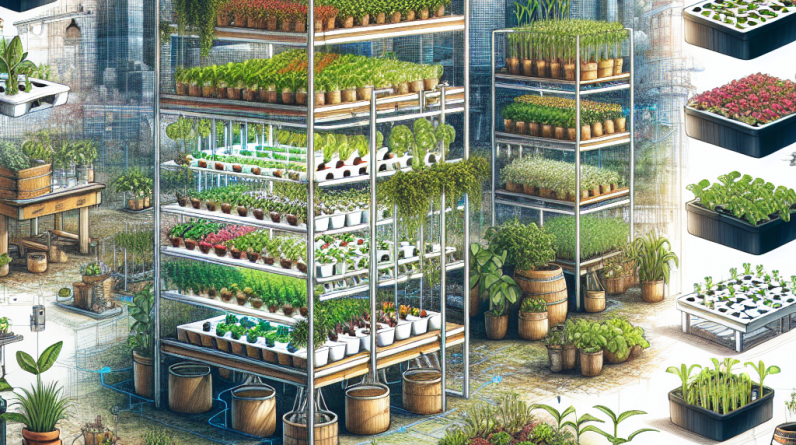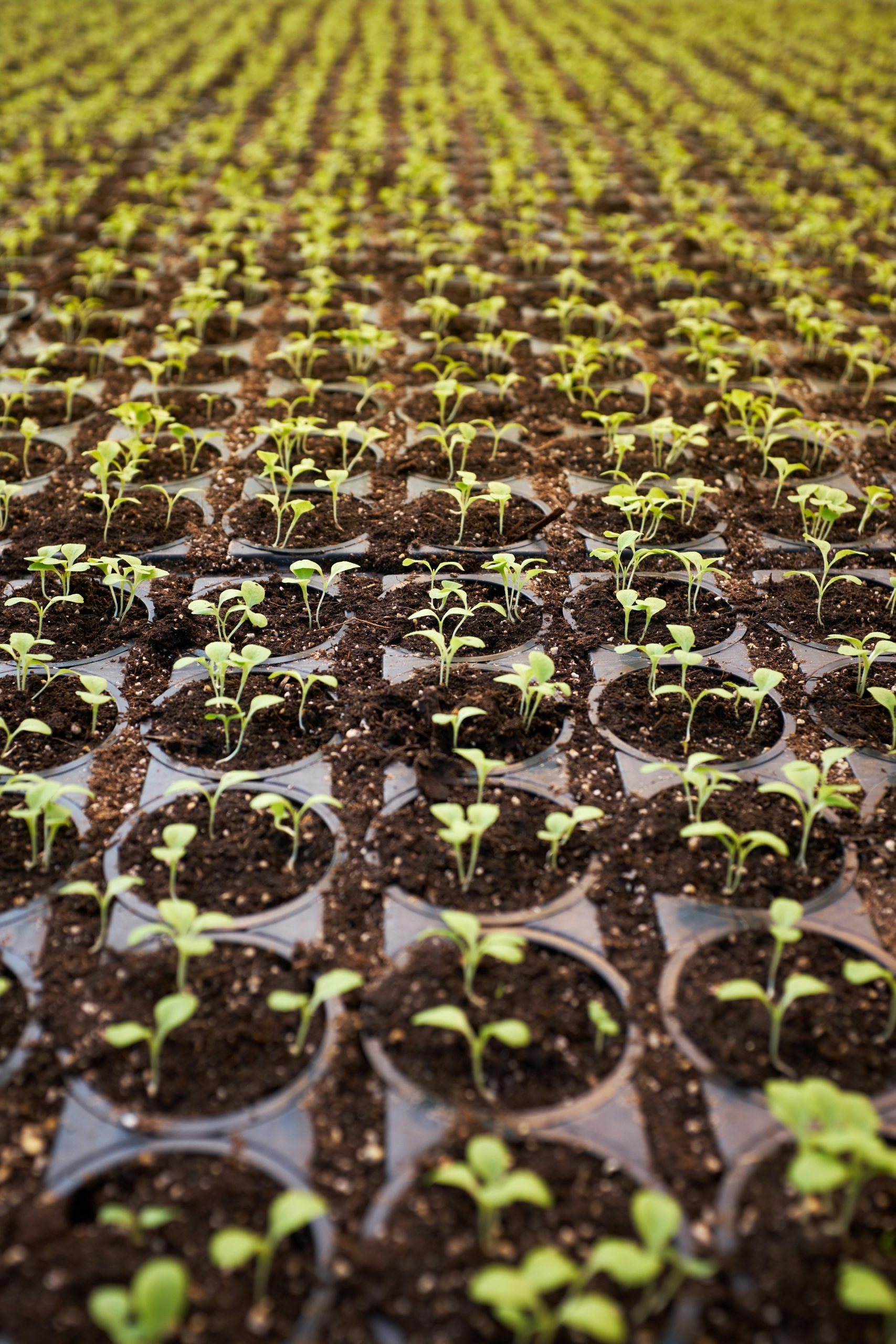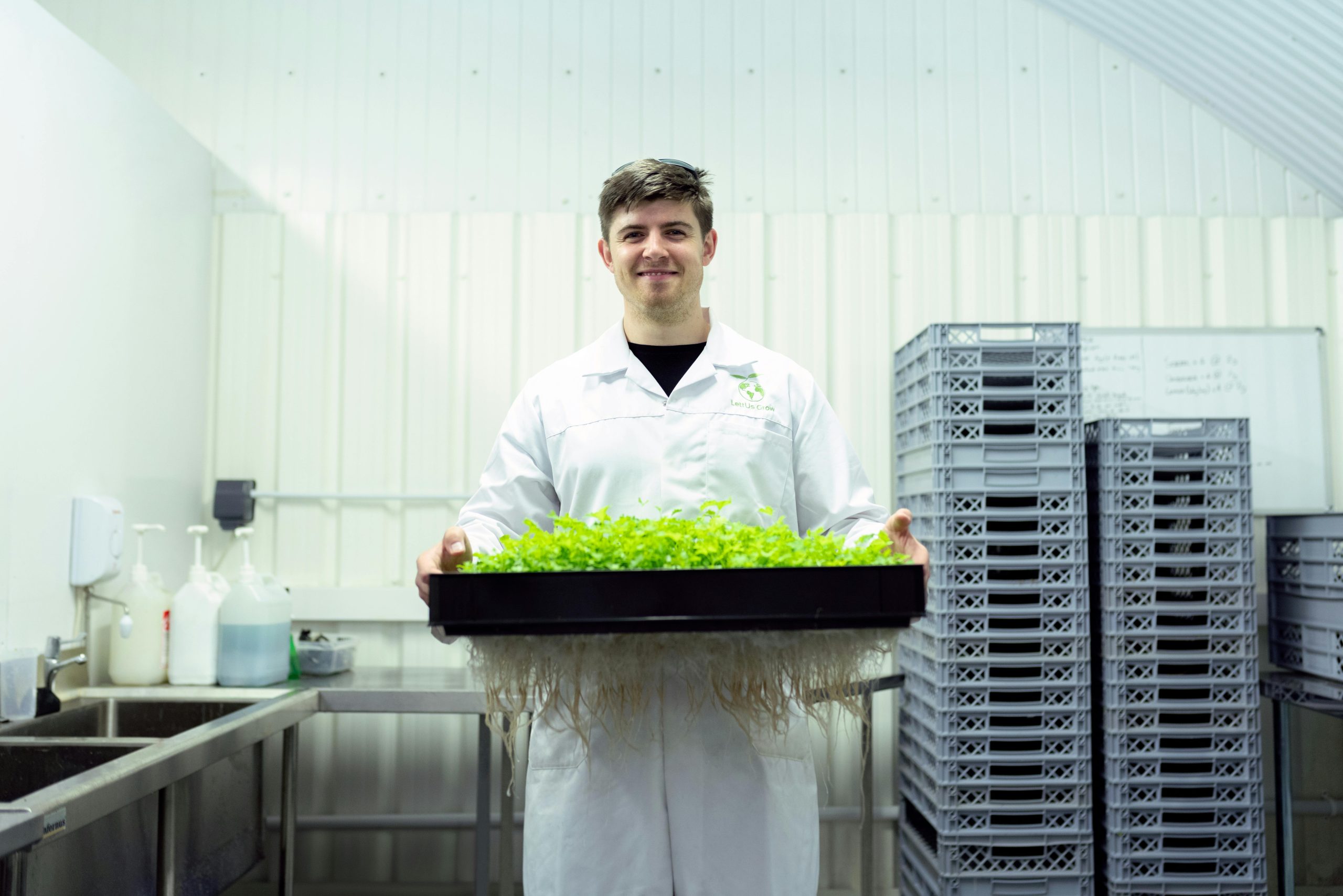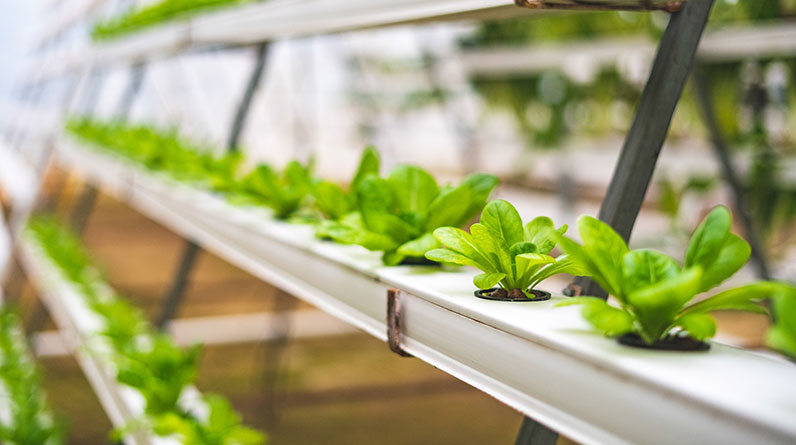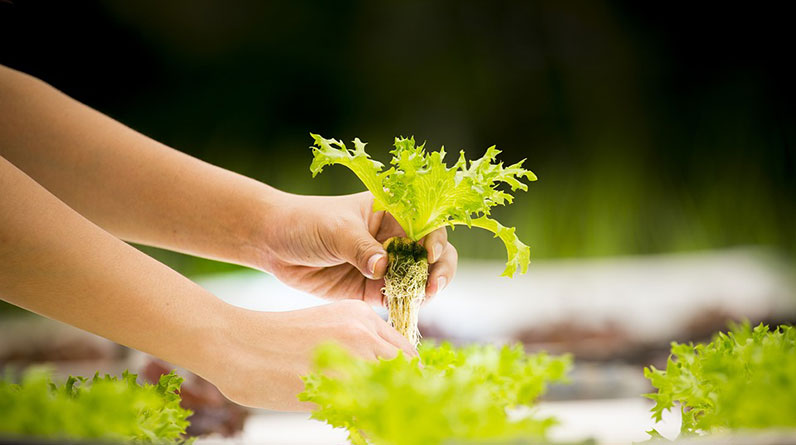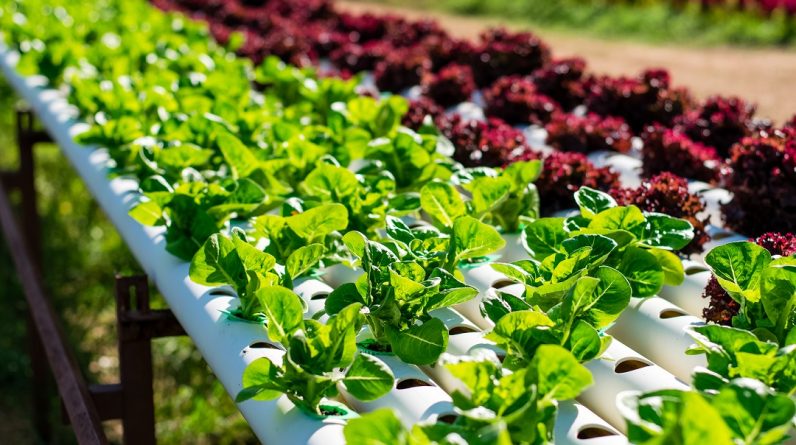
Imagine a garden that doesn’t require soil, takes up minimal space, and yields fresh, organic vegetables all year round. Welcome to the world of hydroponic gardening!
This innovative approach to gardening allows you to cultivate your favorite vegetables, from crisp lettuce to juicy tomatoes, right in your home. Hydroponic gardening eliminates the need for soil, using nutrient-rich water solutions instead.
The beauty of this method lies in its simplicity and efficiency. It’s a game-changer for urban dwellers, those with limited outdoor space, or anyone interested in sustainable living.
Stay with us as we delve into the fascinating world of hydroponic gardening, offering insights and tips to help you grow your own indoor vegetable garden. This is just the beginning of your journey into the future of home gardening.
What Is Hydroponic Gardening?
Hydroponic gardening is a unique and innovative way to grow vegetables without the need for soil. This method utilizes a nutrient-rich water solution to provide plants with the essential elements they need to thrive. The primary advantage of hydroponic gardening is the ability to control the environment, ensuring optimal growth conditions for your vegetables.
In hydroponic gardening, plants are often grown in hydroponic systems that deliver nutrients directly to the plant roots. This direct delivery system allows for faster growth and higher yields compared to traditional soil gardening.
Hydroponic gardening is not just efficient but also eco-friendly. It uses less water than traditional gardening and eliminates the need for harmful pesticides, making your vegetables healthier and safer to eat.
Here are some vegetables that thrive in a hydroponic environment:
- Leafy greens like lettuce and spinach
- Herbs such as basil and parsley
- Tomatoes
- Cucumbers
In addition, hydroponic gardening is not limited by seasons or climate, meaning you can grow vegetables year-round. This flexibility makes hydroponic gardening an appealing option for urban dwellers or those with limited outdoor space.
Despite its many benefits, hydroponic gardening does require some knowledge and equipment to get started. However, with some research and patience, anyone can enjoy the fruits (or vegetables) of their hydroponic labor.
How To Start Hydroponic Gardening?
To embark on your journey of hydroponic gardening, you first need to understand the basic principles. Hydroponic gardening is a method that allows you to grow vegetables without soil, using mineral nutrient solutions in water. This system provides plants with the exact nutrients they need, leading to faster growth and higher yields.
Choosing the right system for your hydroponic garden is crucial. The most common types include the Wick, Water Culture, Ebb and Flow, Drip, N.F.T., and Aeroponic systems. Each has its own advantages and is suited to specific types of plants.
Setting up your hydroponic garden requires careful planning. You need to select a suitable location, preferably one with plenty of light and a stable temperature. Next, you’ll need to assemble your chosen hydroponic system, ensuring it’s clean and free of any potential contaminants.
Once your system is set up, it’s time to choose your plants. Leafy greens like lettuce, spinach, and kale are excellent choices for beginners due to their fast growth and minimal maintenance requirements.
Hydroponic nutrients are essential for successful growth. These are specially formulated solutions that provide your plants with the right balance of essential elements.
Lastly, monitoring your garden is crucial. Regularly check the pH levels, temperature, and nutrient concentration to ensure optimal growth conditions.
Remember, hydroponic gardening is a learning process. Don’t be discouraged if you encounter challenges along the way. With patience and persistence, you’ll soon be enjoying fresh, homegrown vegetables.
Which Vegetables Grow Best Hydroponically?
Hydroponic gardening, the practice of growing plants without soil, offers an efficient and productive way to cultivate vegetables. Among the many vegetables that thrive in hydroponic systems, lettuce stands out for its adaptability and rapid growth. Leafy greens like spinach and kale also perform exceptionally well, given their minimal root system and high water content.
Another popular choice for hydroponic gardening is herbs, particularly basil, cilantro, and dill. These herbs not only grow faster hydroponically, but they also tend to be more flavorful than their soil-grown counterparts.
Next in line are cucumbers and zucchinis, which are well-suited for vertical hydroponic systems due to their vining nature. They require ample light and consistent nutrient supply, but once these needs are met, they reward you with an abundant harvest.
Tomatoes and peppers, although slightly more demanding, can yield impressive results when grown hydroponically. They need careful monitoring of pH levels and temperature, but their high-yield potential makes the extra effort worth it.
Lastly, root vegetables like radishes and beets can also be grown hydroponically, though they require a bit more care and specific hydroponic setups.
Remember, the success of hydroponic gardening lies in understanding the specific needs of each plant type and providing the optimal conditions for growth. This includes the correct balance of light, temperature, nutrients, and pH levels.
What Are The Benefits Of Hydroponic Gardening?
Hydroponic gardening, a method of growing plants without soil, offers numerous benefits for gardeners seeking to cultivate vegetables. Firstly, it allows for greater control over the growing environment. Nutrients, pH, and moisture can be tailored to suit the needs of specific vegetables, promoting healthier growth.
Secondly, hydroponics is ideal for space-saving. Traditional gardening requires ample space, whereas hydroponic systems can be stacked vertically, making them perfect for urban dwellers or those with limited garden space.
Thirdly, hydroponic gardening significantly reduces the risk of disease and pests. As soil is a primary carrier of these problems, eliminating soil from the equation significantly reduces the chances of disease and pest infestations.
Fourthly, hydroponics is water-efficient. In traditional gardening, a lot of water is wasted due to evaporation or runoff. In contrast, hydroponic systems use up to 10 times less water, as it is recycled within the system.
Lastly, hydroponic gardening promotes fast growth and high yield. As vegetables have direct access to nutrients, they grow faster and produce more than their soil-grown counterparts.
Incorporating hydroponic gardening into your lifestyle can be a rewarding experience. It’s an innovative, efficient and eco-friendly method for growing vegetables, offering a plethora of benefits that traditional gardening simply cannot match.
Do Hydroponic Vegetables Taste Different?
Hydroponic vegetables, grown in a water-based, nutrient-rich solution, often raise the question of whether their taste differs from soil-grown counterparts. The answer is nuanced. The taste of vegetables, whether hydroponic or soil-grown, is influenced by a multitude of factors including the variety of the plant, the nutrients it receives, and the conditions under which it grows.
Hydroponic gardening provides growers with precise control over these variables, enabling the production of vegetables with optimal flavor profiles. For instance, the nutrient solution can be tailored to enhance specific flavors in the vegetables. Lettuce grown hydroponically, for example, tends to be crisp and flavorful, often surpassing the taste of traditionally grown lettuce.
Hydroponically grown tomatoes, on the other hand, can sometimes lack the depth of flavor associated with soil-grown tomatoes. This is often due to the absence of microorganisms found in soil that contribute to the tomato’s taste. However, the introduction of beneficial microbes into the hydroponic system can help bridge this gap.
- Quality of water: The quality of water used in hydroponic systems can also impact the taste of the produce. High-quality water free from contaminants contributes to healthier, tastier vegetables.
While the taste of hydroponically grown vegetables can be different, it doesn’t necessarily mean it’s inferior. With the right setup and care, hydroponic gardening can produce vegetables that are equally, if not more, flavorful than their soil-grown counterparts.
How Much Does Hydroponic Gardening Cost?
The cost of hydroponic gardening largely depends on the scale and complexity of the system you choose. A basic home setup can start from as little as $50, while a more advanced, commercial-grade system can run into the thousands. Hydroponic systems can be an economical way to grow vegetables as they can drastically reduce water usage, eliminate soil-borne diseases, and provide optimal nutrient control, leading to faster growth rates and higher yields.
In terms of running costs, the main expenses include the nutrients for the plants, the water, and the electricity for the lighting and pumps. Depending on the type of vegetables you are growing, nutrient solutions can cost between $10 to $40 per gallon. The water cost is usually minimal as hydroponics is a water-efficient method of gardening.
The electricity cost can vary greatly depending on the size of the system and the type of lights used. LED lights are more energy-efficient and have a longer lifespan than traditional grow lights, but they also have a higher upfront cost.
It’s also important to factor in the cost of the growing medium, such as rockwool or clay pebbles, and any additional equipment like pH testers or timers. These costs can add up, but they are necessary for maintaining a healthy and productive hydroponic garden.
Remember, while the initial investment may seem high, the benefits of hydroponic gardening – including the ability to grow fresh, organic vegetables year-round – can offset the costs over time.
Is Hydroponic Gardening Sustainable?
Hydroponic gardening, a method of growing vegetables without soil, is often touted for its sustainability. This innovative approach conserves water, as the closed system recirculates nutrient-rich water, reducing usage by up to 90% compared to traditional farming. Furthermore, the absence of soil eliminates the need for harmful pesticides and fertilizers, making hydroponics a more environmentally-friendly choice.
Another advantage of hydroponic gardening is its space-efficiency. You can cultivate a high yield of vegetables in a compact area, making it an ideal solution for urban farming or for those with limited outdoor space. Additionally, hydroponic systems allow for year-round growth, independent of weather conditions, which contributes to local food security and reduces the carbon footprint associated with transporting produce.
However, the sustainability of hydroponic gardening is not without its challenges. Initial setup costs can be high, and systems require regular maintenance and electricity to operate. Some critics argue that the energy required for artificial lighting in indoor hydroponic systems can offset the environmental benefits.
Despite these concerns, ongoing advancements in renewable energy and efficient LED lighting technologies are making hydroponic gardening increasingly sustainable. By adopting these practices, we can enjoy fresh, home-grown vegetables while minimizing our environmental impact.
Key factors to consider for a sustainable hydroponic garden include:
- Opting for energy-efficient lighting and heating systems
- Choosing organic, nutrient-rich solutions for plant growth
- Implementing water-saving techniques to further conserve resources
It’s clear that while hydroponic gardening presents challenges, its potential for sustainability is significant. As technology progresses, so too does the feasibility of eco-friendly, hydroponically grown vegetables.
Can Hydroponic Gardening Be Done Indoors?
Absolutely! Hydroponic gardening is a fantastic method for growing vegetables indoors. By employing a hydroponic system, you can cultivate a variety of vegetables without the need for soil. This innovative method uses mineral nutrient solutions in a water solvent, allowing plants to receive all the necessary nutrients directly from the water.
Hydroponic gardening is not only feasible indoors, but it also offers several advantages. For one, it allows for year-round growing, irrespective of the outdoor weather conditions. This is particularly beneficial for those living in regions with harsh winters, enabling them to grow fresh produce all year long.
Another significant advantage of hydroponic gardening is the efficient use of space. With the right setup, you can grow a large number of vegetables in a relatively small area. This is a game-changer for urban dwellers with limited outdoor space.
Moreover, hydroponic systems are known to produce higher yields compared to traditional soil-based gardening. The controlled environment facilitates optimal plant growth, resulting in more abundant harvests. This is especially true for leafy greens like lettuce and herbs such as basil.
Hydroponic gardening also reduces the risk of pests and diseases, which are commonly associated with soil. This results in healthier plants and higher quality produce.
To start your indoor hydroponic garden, you’ll need a few basic items:
- A hydroponic system: This can be a simple DIY setup or a more advanced commercial system.
- Light source: Most indoor gardens rely on artificial lights, but a sunny window can also work for some plants.
- Nutrient solution: This is the “”food”” for your plants. It’s essential to use a solution designed specifically for hydroponic systems.
- Plants: Almost any vegetable can be grown hydroponically, but some are easier to start with than others. Lettuce, spinach, and herbs are all great choices for beginners.
In summary, indoor hydroponic gardening is not only possible but also highly beneficial, making it an excellent choice for urban gardeners, those with limited outdoor space, or anyone looking to grow fresh vegetables year-round.
Conclusion
In conclusion, hydroponic gardening offers a unique, efficient, and sustainable way to grow vegetables. We have explored the concept of hydroponic gardening, its setup process, and the vegetables that thrive best in such a system. The benefits of this gardening method are numerous, from space-saving to higher yields and reduced water usage.
We also addressed questions about the taste of hydroponic vegetables, which is often comparable or even superior to traditionally grown ones. The cost of setting up a hydroponic system can vary, but the long-term benefits can outweigh the initial investment.
Hydroponic gardening is not only sustainable but also versatile, as it can be done indoors, making it accessible to urban dwellers or those with limited outdoor space.
As we move forward, the trend towards sustainable and efficient food production methods like hydroponic gardening is expected to grow. Therefore, it’s crucial to continue exploring and understanding this innovative approach to gardening. Whether you’re a gardening enthusiast or a novice, hydroponic gardening offers an exciting and rewarding journey into the world of sustainable vegetable production.



